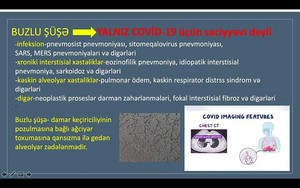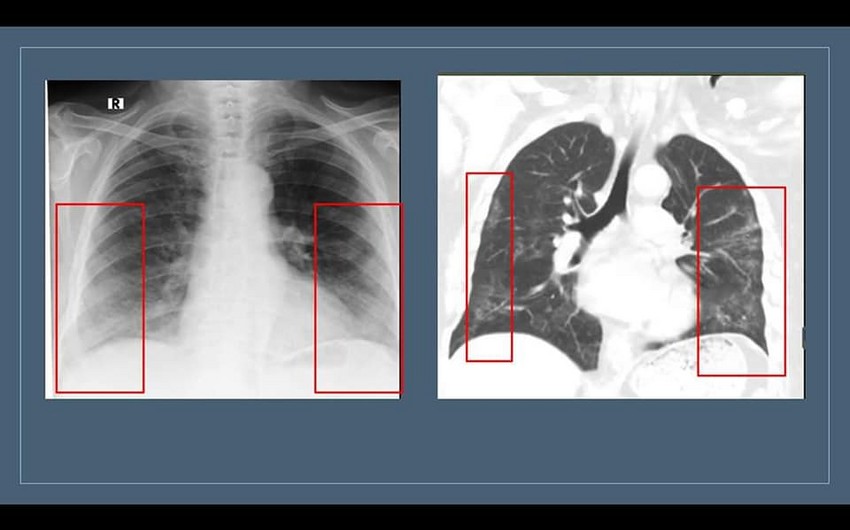During the pandemic, the term "ground glass" became a nightmare for people. Sometimes it is called "ice crystal," said a radiologist at the Azerbaijan Medical University's Teaching Surgery Clinic, head of the Department of Radiation Diagnostics, associate professor Malahat Sultanova, Report says.
According to the physician, even under normal circumstances, X-ray scans may show "ground glass" opacities. "For example, if the patient does not inhale deeply during the examination, all the lung zones may be homogeneous and give the appearance of "ground glass" opacities due to the physiological expiratory impairment of lung ventilation. Currently, the scan of "ground glass" opacities is considered the main radiodiagnostic sign of coronavirus. This means that the lungs, which generally seem clear, appear to have translucent zones. "Ground glass" opacities begins to grow in 3-4 days of the disease, and remain even a month after recovery. In patients with mild to moderate disease forms, the changes disappear entirely after 2-3 months."
"Ground glass" opacities are not only typical for COVID-19 patients but can be seen in other diseases as well, said the radiologist.
"However, if the scan is accompanied by appropriate clinical and laboratory signs, the diagnosis is assessed as COVID. Chest X-rays and CT scans display "ground glass" opacities. However, the sensitivity of the X-ray examination, in this case, is low. Therefore, in the first 1-4 days of infection, the X-ray may seem completely normal in 25% of cases, which does not hint at the absence of pneumonia. It is more specific to see "ground glass" opacities on a CT scan," said the doctor.



 https://static.report.az/photo/f047aa02-86d5-315e-9f42-aff36553fc54.jpg
https://static.report.az/photo/f047aa02-86d5-315e-9f42-aff36553fc54.jpg

